When I started this series, I promised that we wouldn’t deal with war, revolution and upheaval every month, but sometimes also explore the lighter things in life. Cats and culture, for example.
That’s why we are heading to the cinema today!
But minors only if accompanied by parents, please. Or with a doctor’s note.
Because one hundred years ago, in March 1922, was the release of Nosferatu – A Symphony of Horror. And what a film release it was! Preceded by a weeks-long media campaign with newspaper ads, large posters, flyers, signs on streetcars and airships. And then the premiere: in a marble hall in Berlin, with a costume ball, with dancers, with an orchestra. They probably even had cigars.


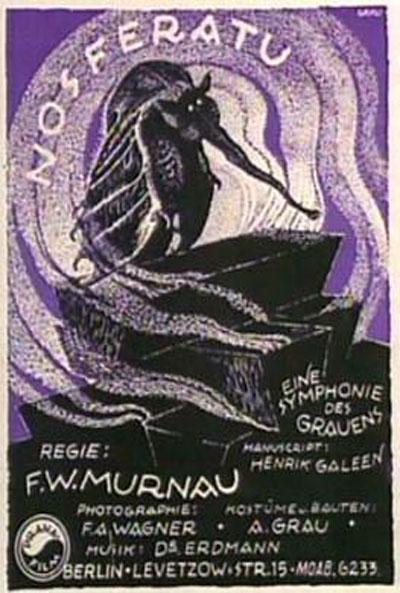

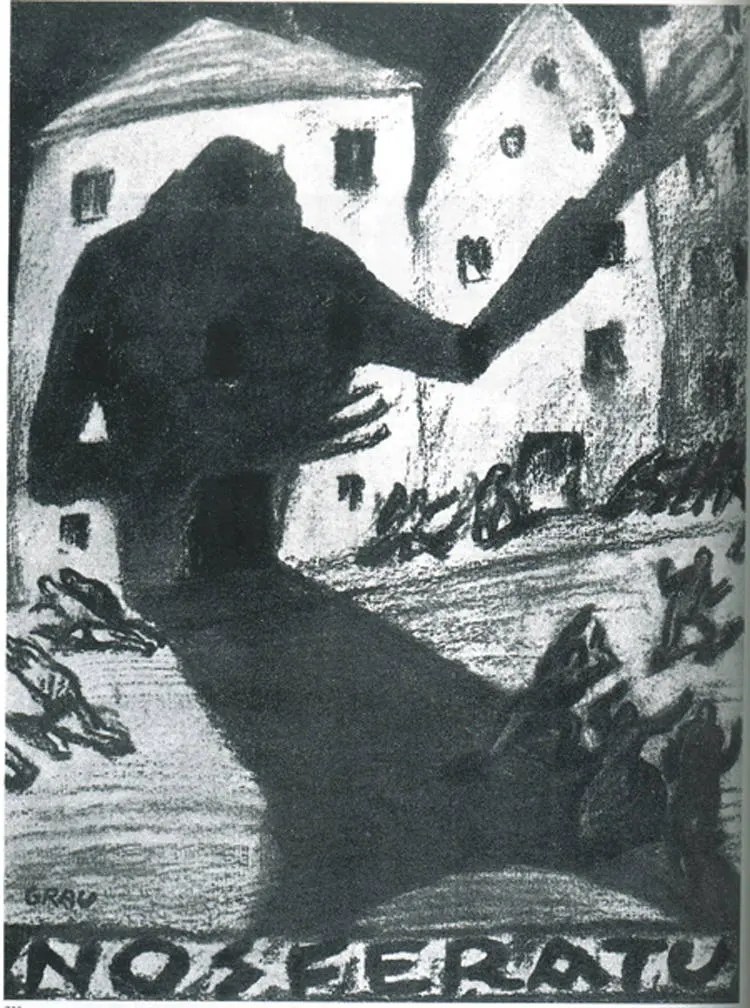
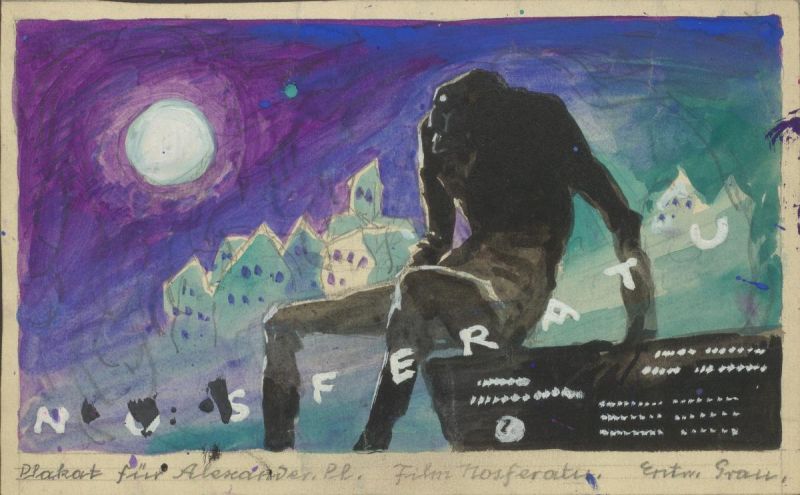
It was the first time in German cinema history that a film’s advertising budget was larger than the production budget.
Which is why the film became so famous. In my opinion.
People who really know something about movies, however, say something different. They claim that Nosferatu is a masterpiece of film history, a seminal gravestone, no a milestone. They praise the visual style, the image composition, the lighting, the camera work, the set-up of the scenes, the framing, the play with light and shadow, the parallelization of body and structure in the interplay of actor and architecture, the creation of tension through transversal movement, the subjectification of the camera view, the partial breaking of the fourth wall, double-exposure cross-fade effects, the naturalistic landscape shots, and the chilling effect created by the reversal of meaning when landscape shots, which would be idyllic in themselves, become scary.

Just the kind of stuff people say when they want to sound smart. Personally, I can’t say much, because I’m afraid of horror movies. If I tell you that I can’t even watch Buffy the Vampire Slayer, The Little Vampire or Attack of the Killer Tomatoes, you hopefully won’t expect me to watch this archetype of horror films.
Before you make fun of me, see if you will dare yourself:
I peeked in for a few minutes, but the real estate agent Knock is as seriously scary as I feared. Even though it’s a silent film, his sardonic laughter sends shivers down my spine. No, I wouldn’t be able to survive all 94 minutes of this.

But in the few parts I was able to watch, white as a sheet and shivering with fear, I was surprised at how many of the issues raised in the film are still relevant today, exactly 100 years later.
For example, when Count Orlok arrives by ship in Wisborg (played by Wismar), he brings Covid-19 to town. Unlike in the few earlier horror films, the monster is no longer merely after individual victims, but poses a threat to all of humanity. Nosferatu is a super-spreader.
Instead of fighting the threat jointly and proactively, the people of the town freeze in shock and surrender to doom. The city councilors, worried about their businesses and shops and factories, invoke “freedom” and “individual responsibility” to justify their inaction. The epidemiologist Dr. van Helsing is completely ignored.
What I liked, as an avid hitchhiker, is that the film is an early proponent of environmentally friendly car-pooling. As Hutter is roaming through the Carpathians, a carriage stops, offering to take the young man to his destination, Orava Castle in Slovakia. In the era of incipient automobility, this was an important statement against selfish individualism, against wasting resources and for greater solidarity.
Looking at that castle, it actually makes me want to hitchhike there as well. Now, I haven’t seen how it ends in the movie, but I am sure it will have a happy ending. Movies always do.
Of striking topicality are the many scenes in which Nosferatu is driving, shipping and hauling coffins around. A clear reference to the Amazon and other delivery guys of our time and a metaphor for consumerism and capitalism. Humans don’t even need vampires, because they suck and exploit themselves, always accumulating more and more coffins in the basement. (That’s where the term “skeletons in the closet” comes from, when people buy and order so much stuff that they don’t even know where to put it all.)

Oh, by the way, this Nosferatu alias Count Orlok is the actual vampire villain, not – as I initially suspected – the estate agent Knock. On the other hand, what’s the difference between real estate brokers and vampires? Bloodsuckers they both are.
Nosferatu was played by Max Schreck, whose portrayal was so convincing that his name entered the German language as a common expression (“Ach, Du Schreck!” = Oh, my gosh!) and even became a verb (“erschrecken” = to frighten, to scare).
And then, Hollywood adopted the word.

The only actor more frightening than Max Schreck was Klaus Kinski, who could make your blood freeze just by peacefully sitting in a talk show.

Werner Herzog was the only director, with whom he got along well, which is why the former cast the latter to play the vampire in the 1979 remake Nosferatu the Vampyre.
What man people don’t know about Klaus Kinski: In the 1990es, he became Germany’s foreign minister, because East and West Germany couldn’t agree on any other candidate. Once, it must have been during the United Nations General Assembly in New York in 1998, I (on the very left, as behooves my politics) even met him (fourth from the right).

This raises (at least) two questions: Why was I more important as a 23-year-old than I am now? And why didn’t anyone back then tell me how stupid my glasses look? (By the way, I still have the same ones, although the diopters don’t fit at all anymore. But unfortunately, the health insurance doesn’t pay for new glasses, because they are blowing their money on some stupid homeopathic yoga pills instead.)
Back to the movie. The plot (young man goes to the Carpathians to close a real estate deal with a count, but realizes that he is a vampire, and so on) may ring a midnight bell. That’s right, it’s the same story as in the novel Dracula, written by Bram Stoker, published in 1897.
The producers of Nosferatu didn’t even try to hide the fact, pointing to it in the opening credits: “Based on the novel Dracula – by Bram Stoker. Liberally written by Henrik Galeen.” The production company, Prana Film Ltd, for which Nosferatu was the first film, had spent a lot of money on advertising, on cigars, on champagne and all sorts of glitter and frippery to fit the cliché of the Roaring Twenties, but there was one thing they had forgotten: a lawyer.
“That would be the third bloodsucker,” I hear someone joke. But that would be a cheap shot, and those are not tolerated here.
Before producing a film, it would be advisable, as in most situations in life, to consult a lawyer. If the film people had asked me, this would have been my advice:
If you are making a film based on a book, you have to come to some agreement with the author. Or you have to change the story in such a way that you can credibly claim that you came up with it independently. But in no case should you be so moronically stupid as to mention in the opening credits the book from which you stole the story!
And for this solid advice, I wouldn’t even have asked for much, just begged for a small extra role. When I was still working as an attorney, that’s how I got an appearance in Tatort, a weekly crime drama on German TV. In episode 624 “Feuerkämpfer” you can see me in two tiny walk-on roles, which are not only not worth mentioning, but in which I was literally not allowed to mention anything. Because the film was set in Hamburg, and unfortunately, I have a Bavarian accent. (These film people are incredibly professional and really pay attention to every detail). – For the second time already, I am asking myself why my life used to be more exciting when I was younger. United Nations, television, etc. And now I’m sitting here writing a blog. Like an old man who comes up to you in the park and tells you his life story without being asked.
But Prana Film Ltd didn’t fare any better.
Bram Stoker was already dead. (This often happens to people who get involved with vampires.) Copyright is an inheritable right, though. Florence Stoker, the Dracula author’s widow, was less lawyer-shy and sued Prana Film Ltd for copyright infringement. She won, because “but we changed the names” is not a sufficient defense against a copyright lawsuit. Especially when, see above, the defendant admits in the movie to have availed itself of another source.
Five months after the premiere, Prana Film Ltd went bankrupt. Nosferatu was to remain their only film.
At Ms. Stoker’s request, the court ordered the destruction of all copies of the film. According to § 98 I 1 of the German Copyright Act, this is one of the possible consequences of a copyright infringement, and it was always a great pleasure when I was able to enforce that. You then meet the opposing lawyer at some junkyard, he unloads a truck full of DVDs or books, and you set them on fire. So, if you’ve always wanted to be a witch and dance around the fire, but didn’t get into witch school, just go to law school instead and then specialize in intellectual property law.
So, this film shouldn’t even exist anymore.
How is it then that you – if you are less of a chicken than me – can still watch Nosferatu today? Well, at the time of the lawsuit, too many copies of the film had already been distributed all over the world. They were shown in cinemas from Casablanca to Cochabamba, from Turku to Timbuktu, and probably even in the dubious cinemas of Valletta and Salvador.


Because the copies had been passed on, resold, lent, borrowed and partly copied without permission, not even Prana Film Ltd had a clear tally anymore. (Besides, it was bankrupt, so it didn’t give a damn. All it really wanted was to win the Oscars, but those weren’t invented until 1929.) And even if one could have researched in which cinemas of the whole wide world a reel of Nosferatu was still humming in the projector, not all countries had ratified the Berne Convention, a treaty for the international recognition of copyright law. There are many countries in the world that are still pretty relaxed about it. – And so, contrary to the court order, the film became undead.
But enough of the legal excursus. After all, you are here for the vampires.
I think I have something against Dracula and similar vampires not only for aesthetic and nervous reasons, but also because I lived in Romania for a year. In Transylvania, to be exact. There, I noticed very quickly how annoying it is when visitors or friends from all over the world are constantly creeping out of their coffin to crack vampire jokes. Really, folks, that’s not creative! (I don’t even want to imagine what lame jokes the people of the Virgin and the Sandwich Islands have to deal with.)
These “jokes” are especially annoying because the myth of dangerous Transylvania in the dark Carpathians was created by Bram Stoker, who was never in Romania but lived in the United Kingdom of Great Britain and Ireland. During Stoker’s lifetime, Ireland had not yet become independent. That happened only in 1921/1922, thus exactly during the era of focus in this small history series. However, due to the complexity of the Irish struggle for independence, I have thus far shied away from this topic. If someone feels competent, please raise your hand! (Anyway, I would have to see Ireland for myself first. Because I just made the painful realization that I have never been there. And I wouldn’t want to write such malarkey as this Stoker guy.)
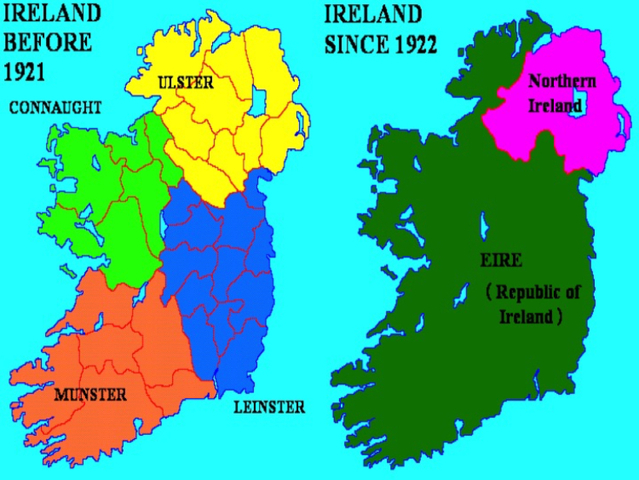
In Nosferatu, Hutter says “I must travel far, far away, to the land of thieves and phantoms”, thus serving the common clichés about Eastern Europe of a dangerous and poor and wild place. The typical anti-Slavic prejudices, in whose tradition Eastern European workers are still being exploited today.
And Romania isn’t even a Slavic country, but the legitimate successor of Rome.

Incidentally, the novel Dracula was not published in Romania until 1990, almost a hundred years after its first publication. The absurd story that the country was haunted by vampires was not even known in Romania. From the 1960s, Romania opened up to Western tourism, and suddenly there came tourists with garlic and crucifixes in their luggage, looking for Dracula’s castle.
At first, the Romanians didn’t know what the stupid Westerners wanted. Then they explained patiently and over and over again that there was no Dracula castle because Dracula was a fictional character. No, there were no vampires here. Yes, there was running water and electricity. No, nobody drank blood. Yes, the children went to school. No, the cemetery on the hill was from World War II.

Only one Romanian thought bigger, further, faster: Alexandru Misiuga. When once again, three Americans pestered him, looking for Dracula’s castle, he asked them what the story was all about. In the book, Jonathan Harker, the character in Dracula, visits Bistrița and then travels over the Borgo Pass to Count Dracula’s castle.
Misiuga was director of the Bistrița Tourism Office and thought: “I can make something out of this!” He applied to the Minister of Tourism for a permit to build a hotel at the Borgo Pass. In doing so, however, he had to keep Dracula a secret, because the book was banned in Romania. So he made up stories of ski tourism and things like that and finally got the permit. Of course, the tourists came only because of Dracula.
However, today most Dracula visitors go to Bran. There is a castle that has absolutely nothing to do with Dracula. How could it? After all, there was no Dracula. But this castle resembles the one described by Bram Stoker in his book. Meanwhile, the castle has given up the fight, marketing itself as Dracula’s castle and selling Dracula mugs, Dracula hats, Dracula mouse pads and all the junk that Nosferatu tried to warn us about.

When I lived in Romania, a friend told me about “strigoi”. These are undead people, but not vampires. They don’t bite anyone, they don’t drink blood, they just get up from the grave and do a little mischief or take revenge on someone who has harmed them. That’s why, one lunar cycle after the burial, people open the grave at night and chop off the corpse’s head, just to be on the safe side. Or drive a stake through the heart. Or cut out the heart and burn it. The friend offered to ask around in the villages around Târgu Mureș, and maybe we could watch the proceeding one night.
I said thanks, but no thanks.
Because what I learned from Nosferatu: If a woman wants to keep you up until dawn, you can’t trust her.
And what you learned: How to write about a movie that you didn’t dare watch.
Links:
- All articles of the series “One Hundred Years Ago …”.
- More history.
- More cinema.
- And more stories from Romania.
- If you learned something useful this time, I’d be happy about your support for this blog. Maybe that way I can finally update my glasses for the first time in twenty years.




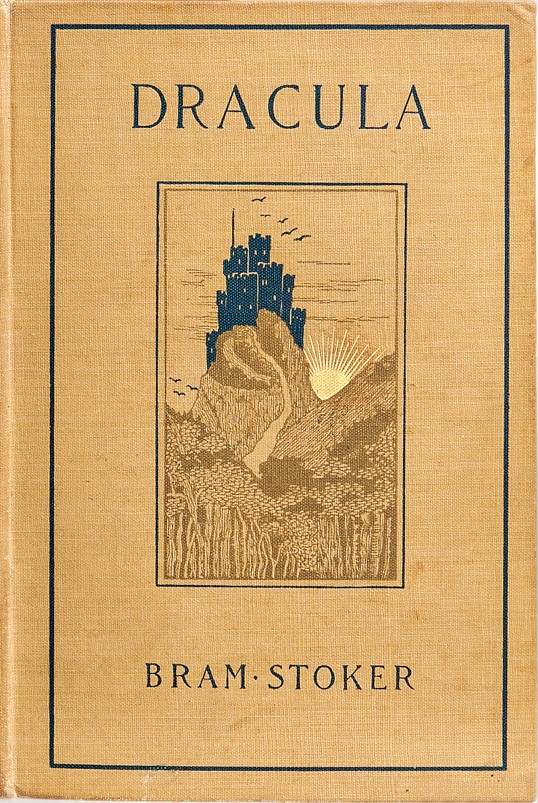

Pingback: Vor hundert Jahren lief ein Film, den es eigentlich nicht hätte geben dürfen – März 1922: Nosferatu | Der reisende Reporter
Such a baby-faced young man in 1998😂 I may watch this movie at some point in my life, but I have other films to see first. I like vampire and other horror stories. Stephen King is a favorite author of mine, but I prefer Anne Rice’s vampires.
Such a shame that old Cinema fell into disrepair. It must have been beautiful at one time.
Thank you Andreas for another fun history lesson, even if we aren’t allowed to make lawyer jokes😂😂
No cheap-shot lawyer jokes, at least. ;-)
I am shocked myself how baby-faced I looked. Hard to believe that anyone took me serious back then. Well, at least I have grown out of that.
If you watch real vampire and horror movies, you might not find “Nosferatu” scary at all. But you will probably discover plenty of shots, scenes and techniques that have since been copied by other movies.
There was, in fact, a historical figure and quite a prominent one at that, who eventually earned the name of Dracula in Romania. His is also known as Vlad the Impaler. Another Vladimir – unlike the Russian Vladimir, a hilariously nice and funny chap – told us his story on a walking guided tour of Bucharest. It’s a gruesome story about how this Vlad scared an overwhelmingly large amount of Ottoman invaders into running back the way they came from. His story ended in an emotional account of the revolution against the real, modern day Romanian Dracula, Nicolae Ceaucescu. At the end of the tour, our Vladimir earned a deserved round of applause (and lots of tips).
I am glad you added this!
Because I only left it out, as I knew it would take me down another 20 rabbit holes and turn the article into a small book.
I could never have done it as succinctly as you!